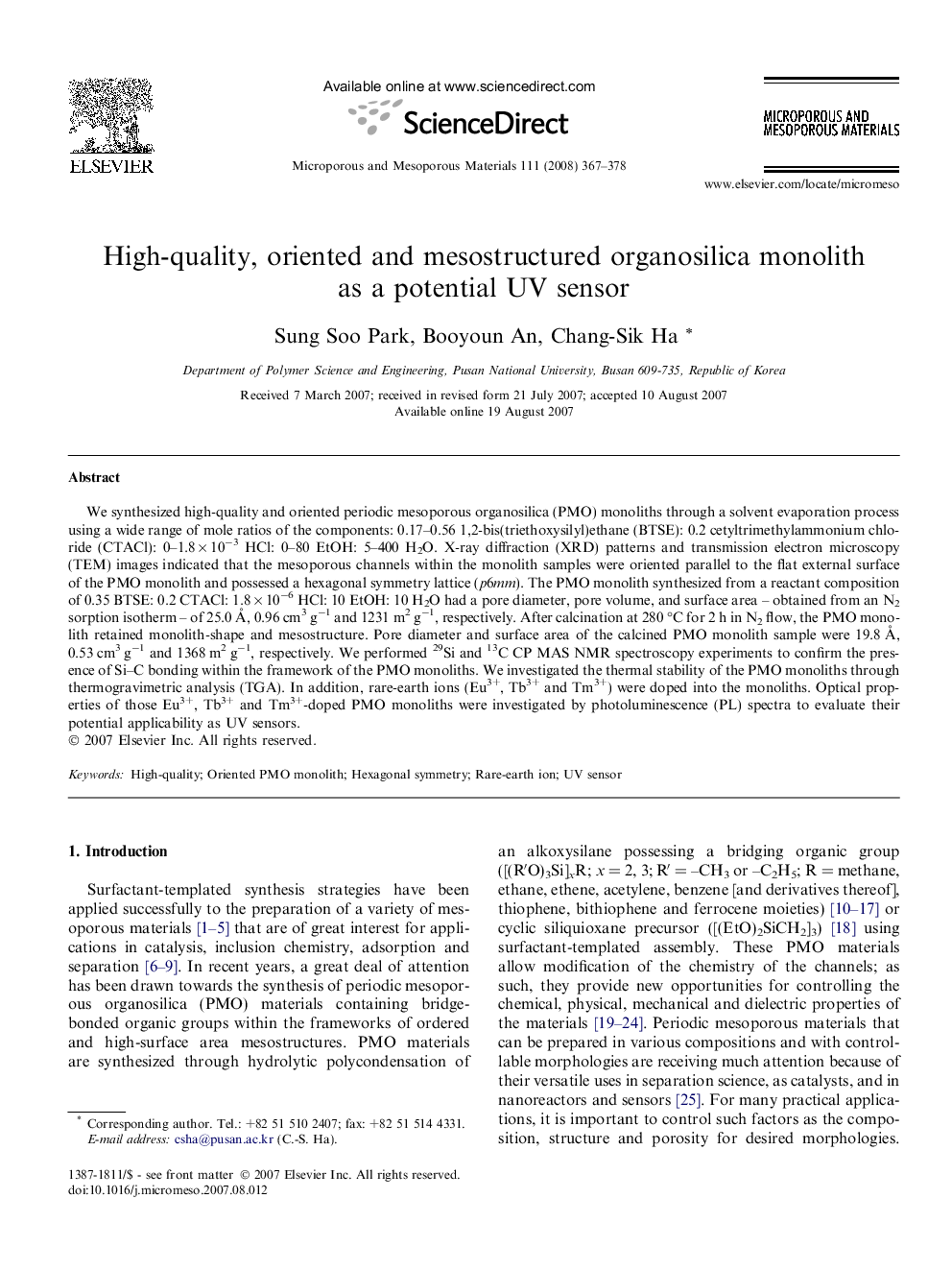| Article ID | Journal | Published Year | Pages | File Type |
|---|---|---|---|---|
| 75734 | Microporous and Mesoporous Materials | 2008 | 12 Pages |
We synthesized high-quality and oriented periodic mesoporous organosilica (PMO) monoliths through a solvent evaporation process using a wide range of mole ratios of the components: 0.17–0.56 1,2-bis(triethoxysilyl)ethane (BTSE): 0.2 cetyltrimethylammonium chloride (CTACl): 0–1.8 × 10−3 HCl: 0–80 EtOH: 5–400 H2O. X-ray diffraction (XRD) patterns and transmission electron microscopy (TEM) images indicated that the mesoporous channels within the monolith samples were oriented parallel to the flat external surface of the PMO monolith and possessed a hexagonal symmetry lattice (p6mm). The PMO monolith synthesized from a reactant composition of 0.35 BTSE: 0.2 CTACl: 1.8 × 10−6 HCl: 10 EtOH: 10 H2O had a pore diameter, pore volume, and surface area – obtained from an N2 sorption isotherm – of 25.0 Å, 0.96 cm3 g−1 and 1231 m2 g−1, respectively. After calcination at 280 °C for 2 h in N2 flow, the PMO monolith retained monolith-shape and mesostructure. Pore diameter and surface area of the calcined PMO monolith sample were 19.8 Å, 0.53 cm3 g−1 and 1368 m2 g−1, respectively. We performed 29Si and 13C CP MAS NMR spectroscopy experiments to confirm the presence of Si–C bonding within the framework of the PMO monoliths. We investigated the thermal stability of the PMO monoliths through thermogravimetric analysis (TGA). In addition, rare-earth ions (Eu3+, Tb3+ and Tm3+) were doped into the monoliths. Optical properties of those Eu3+, Tb3+ and Tm3+-doped PMO monoliths were investigated by photoluminescence (PL) spectra to evaluate their potential applicability as UV sensors.
